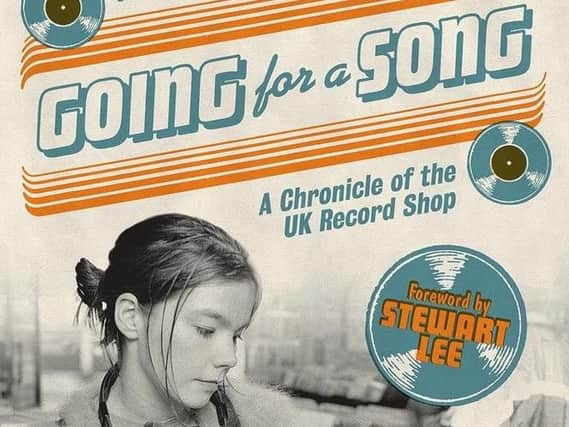Book review: Going For A Song: A Chronicle of the UK Record Shop by Garth Cartwright


Add into this mix a wax cylinder and shellac 78rpm disc for starters, an mp3 file and streaming service to finish, and - spinning somewhere in the middle - a revived 45, a disinterred 33 and a third, a fully-spooled cassette tape and one of those shiny CDs whizzing round faster than the eye can see.
But this being the written word rather than sounds coming out of a speaker cabinet, Garth Cartwright's compelling countrywide compilation also embraces a history lesson, a geography field trip, and a crash course in how to acknowledge a century's worth of social, cultural and political change.
Advertisement
Hide AdAdvertisement
Hide AdSubtitled A Chronicle of the UK Record Shop, it is all-encompassing in both scope and delivery, filling just under 300 pages with the fruits of some extensive research.
There's more than enough here to appeal equally to collectors who still know and enjoy the thrill of ‘crate digging’ in the remaining 400 or so independent shops and those who prefer their sounds streamed or downloaded to devices, yet are curious about what went before.
HMV, with its flagship Oxford Street store dating back to 1921, expanded out of the capital decades later to become the most powerful record retailer in UK history. Today it remains the last major nationwide chain, albeit with fewer branches but not yet consigned to High Street history like Our Price, Virgin Megastores, Zavvi, MVC, Music Zone, Andy's, Borders and even record-selling stores such as Woolworths.
While supermarkets are busy trying to cash in on the so-called vinyl revival, stocking re-presses of classic (but not classical!) LPs, it is a sobering thought that there are now far more used record shops than any selling new stock.
Advertisement
Hide AdAdvertisement
Hide AdCartwright travelled the length and breadth of the country to conduct more than 100 interviews with shop owners, musicians and - last, but not least - customers both past and present.
He admits: ‘I press-ganged people at record stalls and gigs, in shops and markets, hunting for traces of what once was. For most of the shops covered here, all that's left of them is old record bags, 78 sleeves and the very occasional photo.’
A real bonus for readers, then, was Cartwright's decision to feature more than 120 nostalgic black and white images from across the decades, treasures which capture a golden age of record retail.
According to the book, David Bowie, Dusty Springfield, Elton John, Danny Baker and Pete Burns all entered the music industry through jobs in record shops, while even Welsh diva Shirley Bassey could be found post-fame, in the early 1960s, behind the counter in her London-based Shirley's Record Bar.
Advertisement
Hide AdAdvertisement
Hide AdAt the height of their popularity, The Moody Blues opened their own chain of shops - Threshold Records - named after their own label. Despite boasting their own record label too, The Beatles never sold music in their short-lived late 60s Apple Boutique in Baker Street, London. Yet, earlier in that decade, Brian Epstein, the driving force behind Liverpool's NEMS shops, used his trade contacts to launch the Fab Four in the first place.
And, in a great example of celebrity product endorsement, Iceland's Bjork can be seen studiously browsing through racks of vinyl on the book's front cover!
(The Flood Gallery, paperback, £12.99)